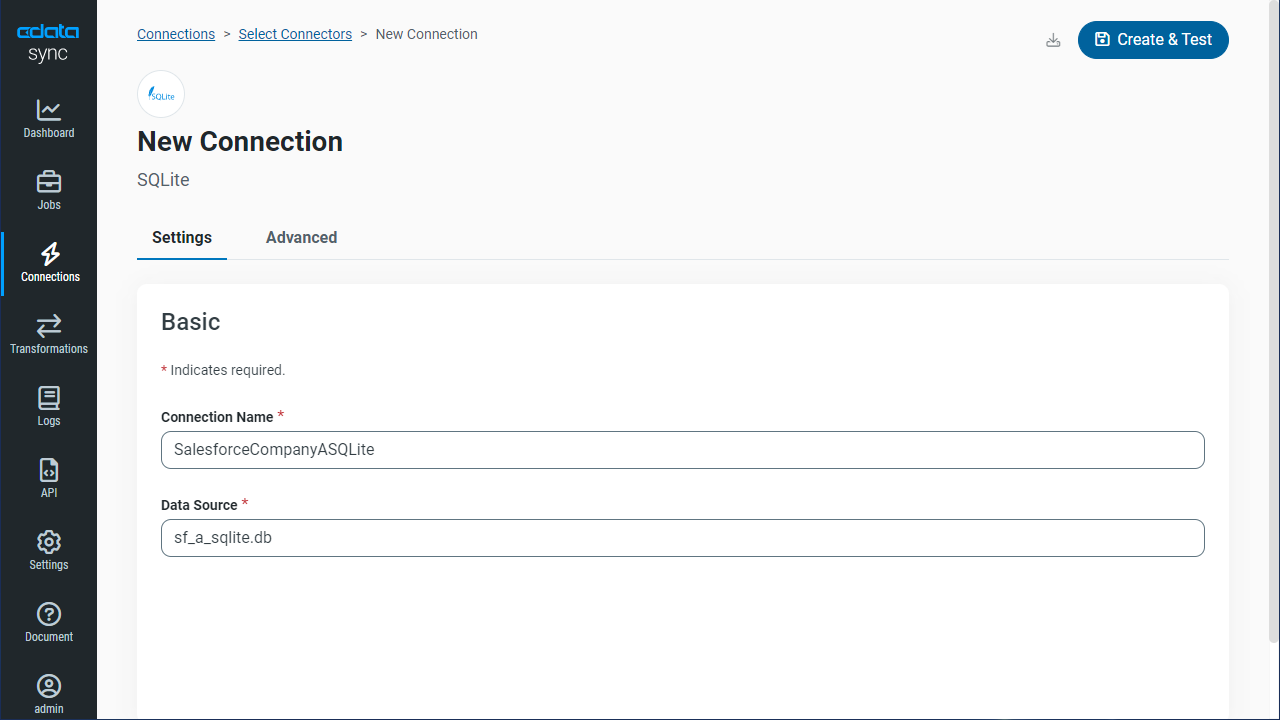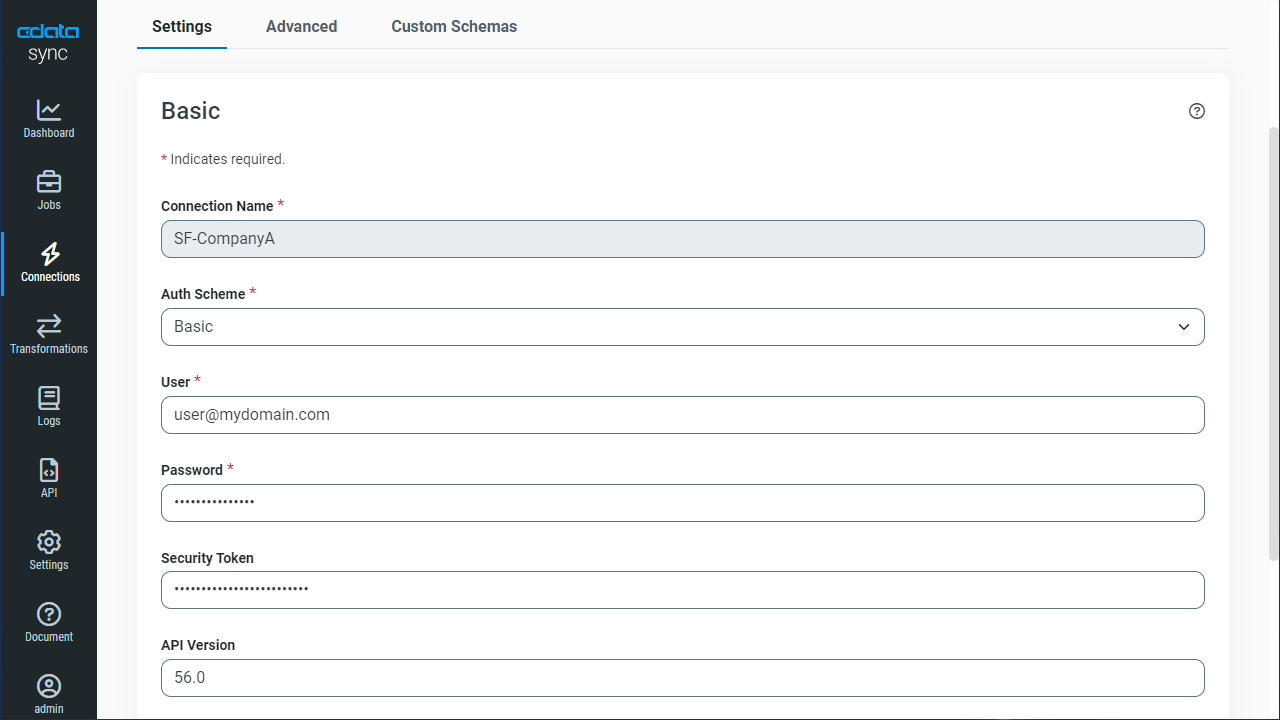Discover how a bimodal integration strategy can address the major data management challenges facing your organization today.
Get the Report →Replicate Multiple SAP Accounts
Replicate multiple SAP accounts to one or many databases.
CData Sync is a stand-alone application that provides solutions for a variety of replication scenarios such as replicating sandbox and production instances into your database. CData Sync includes a web-based interface that makes it easy to manage multiple SAP connections. In this article we show how to use the web app to replicate multiple SAP accounts to a single database.
Configure the Replication Destination
Using CData Sync, you can replicate SAP data to any number of databases, both cloud-based and on-premises. To add a replication destination, navigate to the Connections tab.
- Click Add Connection.
- Select a destination and enter the necessary connection properties. In this article, we use SQLite.
- Enter the necessary connection properties. To replicate SAP to a SQLite database, enter a file path in the Data Source box.
- Click Test Connection to ensure that the connection is configured properly.
![Configure a Destination connection (SQLite is shown).]()
- Click Save Changes.
Configure SAP Connections
You can configure connections to SAP from the Connections tab. To add a connection to one of your SAP accounts, navigate to the Connections tab. For each SAP account you wish to replicate, do the following:
- Click Add Connection.
- Select a source (SAP).
- Configure the connection properties.
The Java edition supports connecting to an SAP system using the JCo .jar file. See the "Getting Started" chapter in the help documentation for information on using the Jco JAR file.
The Windows edition supports connecting to SAP systems using either the librfc32.dll, the librfc32u.dll, NetWeaver, or Web Services (SOAP). Set the ConnectionType connection property to CLASSIC (librfc32.dll), CLASSIC_UNICODE (librfc32u.dll), NETWEAVER, or SOAP.
Note: We do not distribute the librfc32.dll or other SAP assemblies. You must find them from your SAP installation and install them on your machine.
All versions of Sync support connecting to an SAP system using Web services (SOAP). If you are using the SOAP interface you must enable SOAP access to your SAP system and set the Client, RFCUrl, SystemNumber, User, and Password properties, under the Authentication section. Additionally, set the ConnectionType to SOAP.
See this guide on obtaining the connection properties needed to connect to any SAP system.
![Configure a Source connection (Salesforce is shown).]()
- Click Connect to ensure that the connection is configured properly.
- Click Save Changes.
Configure Queries for Each SAP Instance
CData Sync enables you to control replication with a point-and-click interface and with SQL queries. To configure a replication, navigate to the Jobs tab and click Add Job. Select the Source and Destination for your replication.
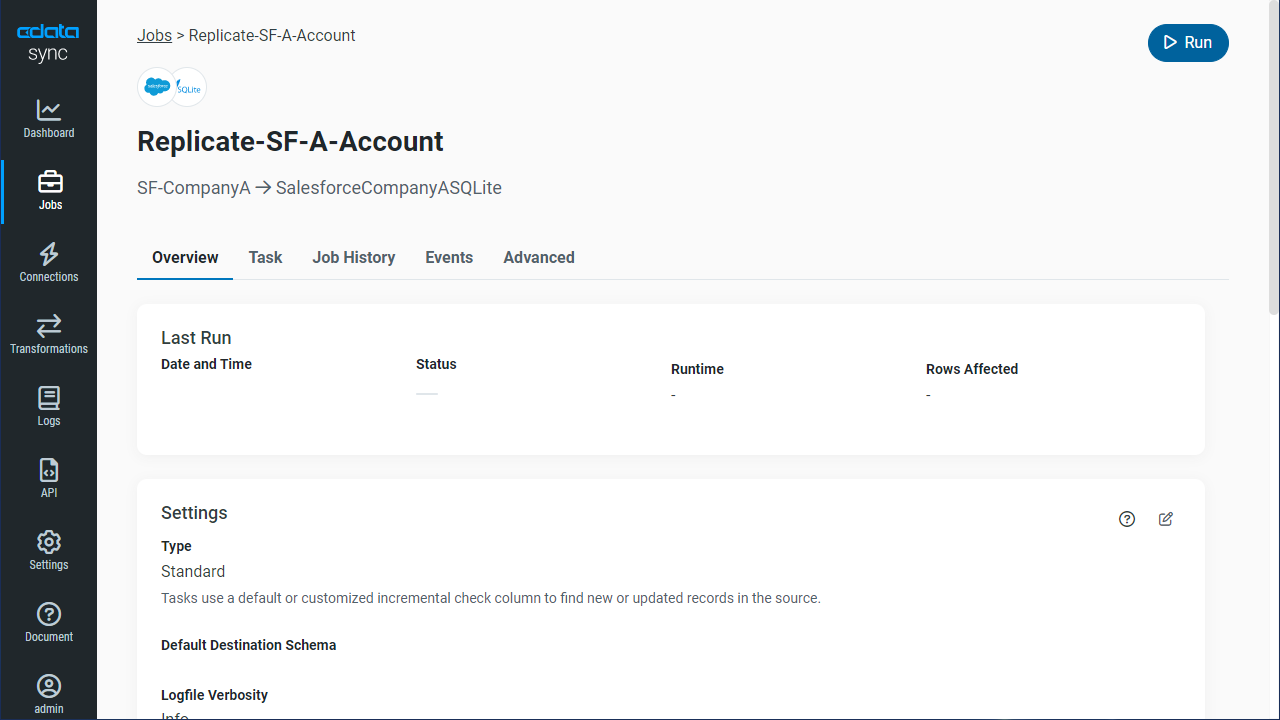
Replicate Entire Tables
To replicate an entire table, click Add Tables in the Tables section, choose the table(s) you wish to replicate, and click Add Selected Tables.
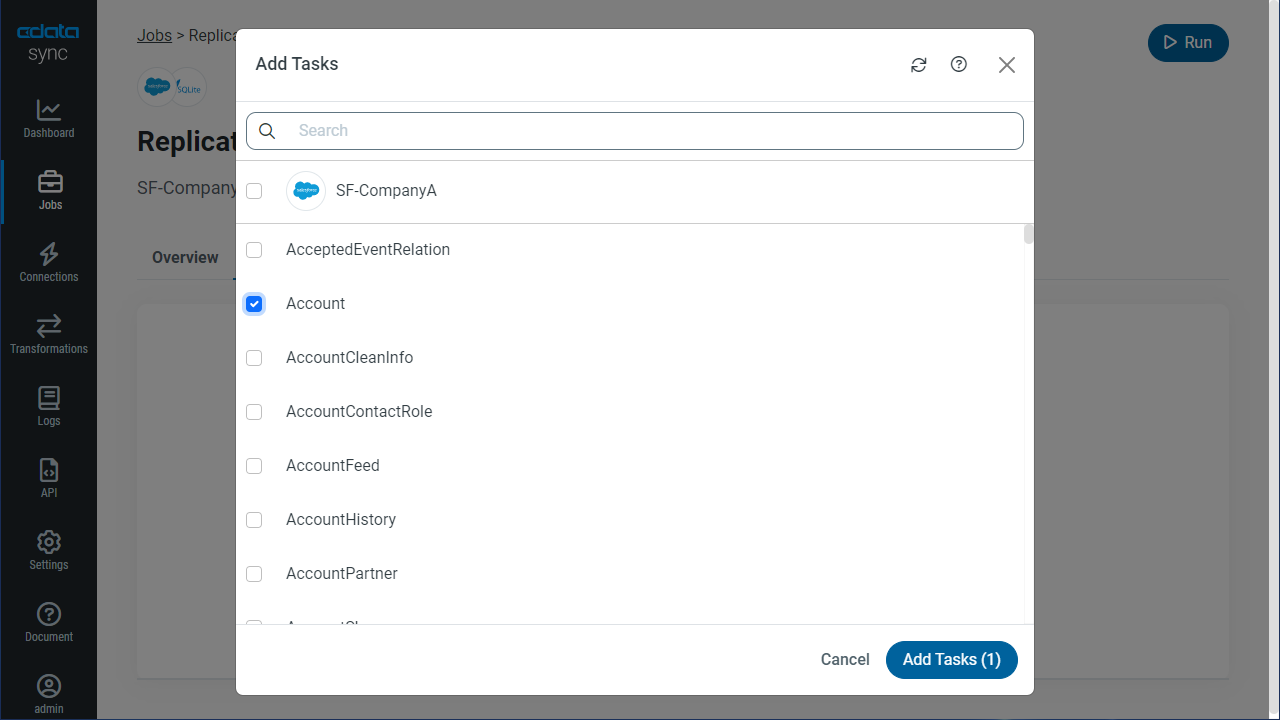
Customize Your Replication
You can use a SQL query to customize your replication. The REPLICATE statement is a high-level command that caches and maintains a table in your database. You can define any SELECT query supported by the SAP API. To customize your replication, click Add Custom Query in the Tables section and define the Query Statement.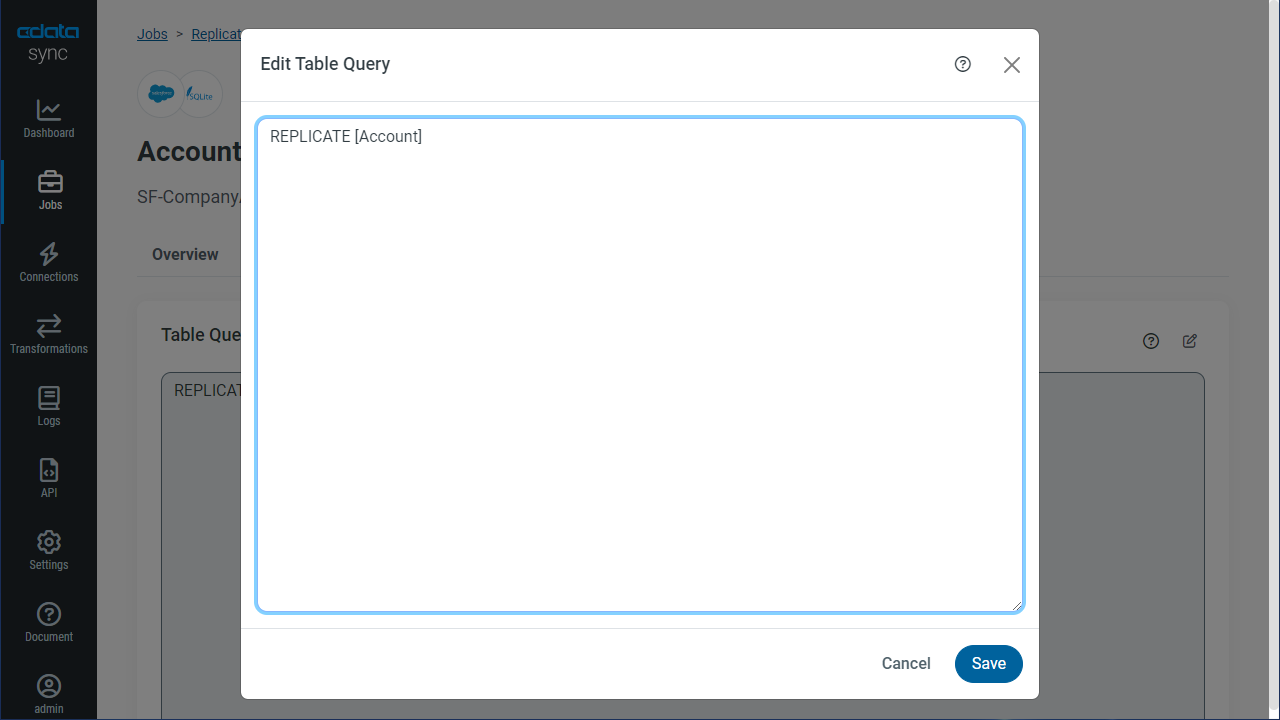
The statement below caches and incrementally updates a table of SAP data:
REPLICATE MARA;
You can specify a file containing the replication queries you want to use to update a particular database. Separate replication statements with semicolons. The following options are useful if you are replicating multiple SAP accounts into the same database:
-
Use a different table prefix in the REPLICATE SELECT statement:
REPLICATE PROD_MARA SELECT * FROM MARA; -
Alternatively, use a different schema:
REPLICATE PROD.MARA SELECT * FROM MARA;
Schedule Your Replication
In the Schedule section, you can schedule a job to run automatically, configuring the job to run after specified intervals ranging from once every 10 minutes to once every month.
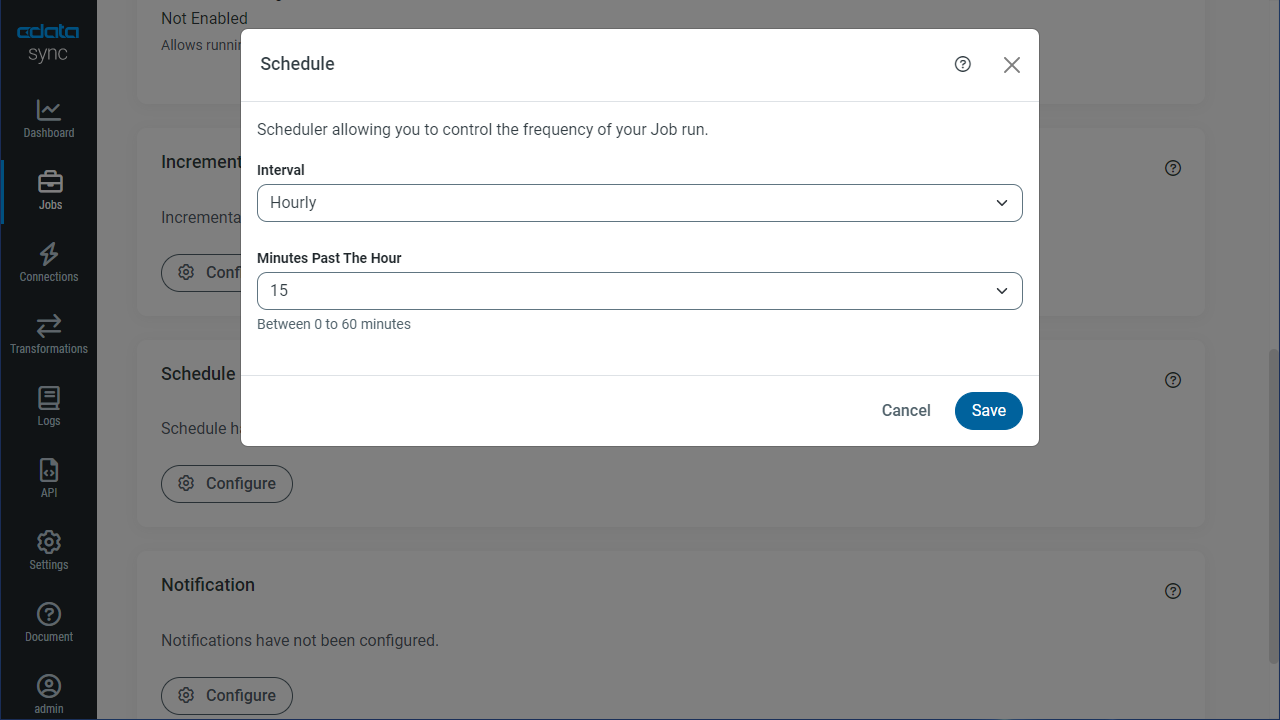
Once you have configured the replication job, click Save Changes. You can configure any number of jobs to manage the replication of the data from your different SAP accounts.






